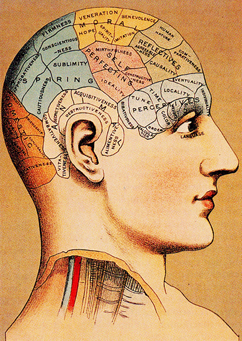
Although it is now regarded as nothing more than a pseudoscience, in its day phrenology was one of the most popular and well-studied branches of neuroscience. In short, proponents of phrenology believed that individual character traits, whether intelligence, aggression, or an ear for music, could all be localized to very specific parts of the brain. According to phrenologists, the larger each one of these parts of a person’s brain was, the more likely they were to behave in a certain way. With this in mind, practitioners would often study the size and shape of subjects’ heads in order to determine what kind of personality they might have. Detailed maps of the supposed 27 different areas of the brain were created, and a person who had a particularly large bump on their skull in the area for, say, the sense of colors, would be assumed to have a proclivity for painting.
How it was Proven Wrong:
Even during the heyday of its popularity in the 1800s, phrenology was often derided by mainstream scientists as a form of quackery. But their protests were largely ignored until the 1900s, when modern scientific advances helped to show that personality traits could not be traced to specific portions of the brain, at least in not as precise a way as the proponents of phrenology often claimed. Phrenology still exists today as a fringe science, but its use in the 20th century has become somewhat infamous: it has often been employed as a tool to promote racism, most famously by the Nazis, as well by Belgian colonialists in Rwanda.
No comments:
Post a Comment